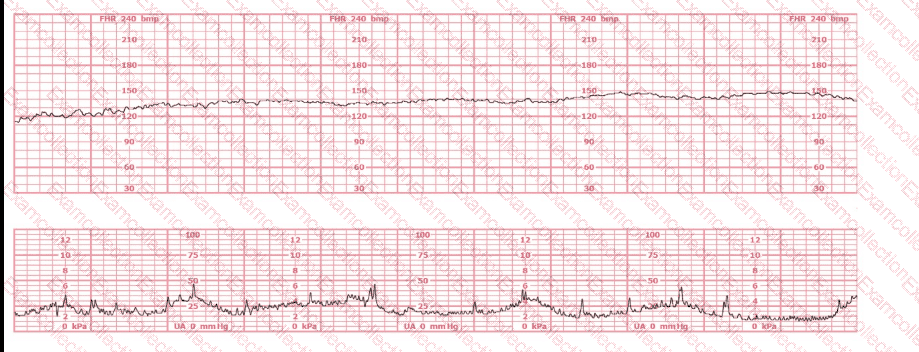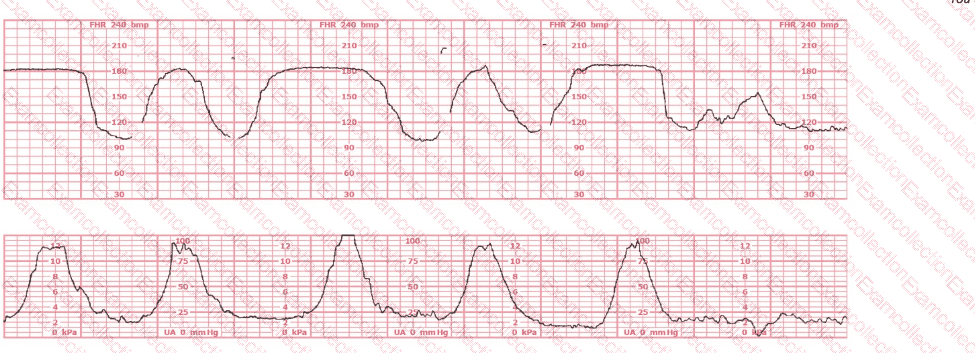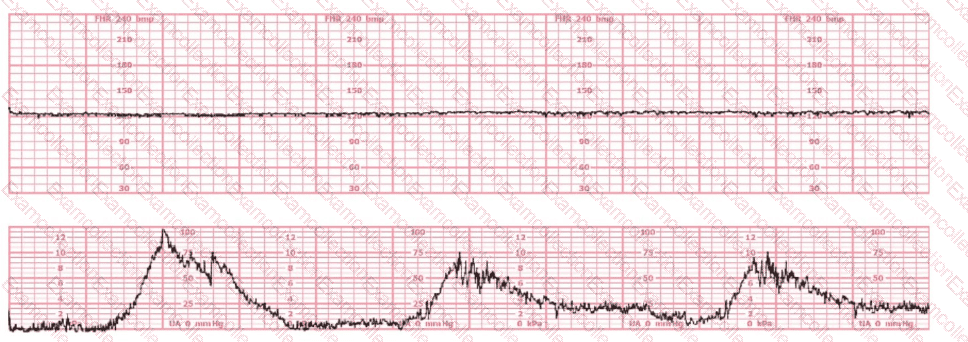NCC EFM - Certified - Electronic Fetal Monitoring
A fetus displays a baseline heart rate of 125 beats per minute with moderate variability. During a contraction, the baseline rate drops abruptly to 80 beats per minute with gradual return to baseline over 90 seconds. This is classified as:
The ratio of oxyhemoglobin to the total amount of hemoglobin available is called oxygen
A woman (G1, P0) at 41-weeks gestation presents to OB triage to rule out labor. Her cervical exam is 1 cm/50%/-2. Membranes are intact. She would like to go home if not in labor. Based on this tracing, which represents the last two hours, the best approach is:

This fetal heart rate pattern is classified as Category III based on:

Intrapartum asphyxia can be determined by:
The most common fetal heart rate pattern consistent with uterine rupture is
The baseline heart rate of a 28-week fetus is 170 bpm. The next step is to:
A reliable indicator of fetal oxygenation is fetal
Fetal respiratory acidosis is most likely to present with which of the following fetal heart rate decelerations?
The tracing shown is from a woman at 28-weeks gestation in the post-anesthesia care unit (PACU) after an appendectomy. She is alert and awake. Based on this fetal heart rate pattern, the most appropriate intervention is:




